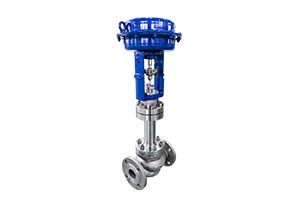Dec. 14, 2020
Sealing Elements Of Ball Valve(2)
Appropriate adjustments
Sealing elements
Although the structure of the ball valve is simple, because it is a medium pressure self-sealing valve and the special structure of the ball, there are many factors that affect the final sealing of the ball valve.
Quality of seal
The quality of the ball valve sealing pair is mainly manifested in the roundness of the ball and the surface roughness of the sealing surface of the ball and the valve seat. The roundness of the sphere affects the fit between the sphere and the valve seat. If the degree of the anastomosis is high, the resistance of the fluid to move along the sealing surface is increased, thereby improving the sealing performance. Generally, the roundness of the sphere is required to be level 9.
The surface finish of the sealing surface has a great influence on the sealing. When the finish is low and the specific pressure is small the leakage increases. When the specific pressure is large, the effect of smoothness on the leakage is significantly reduced. This is because the micro jagged peaks on the sealing surface are flattened, and the smoothness of the soft sealing surface has a greater effect on the sealing performance than the rigidity of metal to metal The seal is much smaller. According to the viewpoint that the fluid does not leak only when the gap between the sealing pairs is smaller than the diameter of the fluid molecules, it can be considered that the gap to prevent fluid leakage must be less than 0.003 μm. However, even after the finely polished metal surface, the height of the peaks still exceeds 0.1 μm, which is 30 times larger than the diameter of water molecules. It can be seen that it is in fact difficult to improve the sealing performance only by improving the smoothness of the sealing surface. The quality of the sealing pair not only affects the sealing performance but also directly affects the service life of the ball valve. Therefore, the quality of the sealing pair must be improved during manufacturing.
4.2 Sealing specific pressure
The specific sealing pressure refers to the pressure acting on the unit area of the sealing surface. The specific sealing pressure is produced by the pressure difference between the front and rear of the valve and the applied sealing force. The specific pressure directly affects the sealing performance, reliability, and service life of the ball valve. The amount of leakage is inversely proportional to the pressure difference. Tests have proved that under the same conditions, the leakage is inversely proportional to the square of the pressure difference. Therefore, the leakage will decrease as the pressure difference increases. The pressure difference is an important factor that determines the specific sealing pressure, so the specific sealing pressure is very important to the sealing performance of ultra-low temperature ball valves. The sealing specific pressure applied on the sphere should not be too large. Too large is good for sealing but will increase the valve operating torque. Therefore, a reasonable selection of the sealing specific pressure is a prerequisite to ensure the sealing of ultra-low temperature ball valves.
4.3 Physical properties of fluids
(1) Viscosity
The permeability of fluid is closely related to its viscosity. Under the same other conditions, the greater the viscosity of the fluid, the smaller its permeability. The viscosity of gas and liquid differ greatly. ① The viscosity of gas is dozens of times smaller than that of liquid, so its permeability is stronger than that of liquid. The exception is saturated steam, which is easy to ensure sealing. ②Compressed gas leaks more easily than liquid.
(2) Temperature
The permeability of a fluid depends on the temperature that causes the viscosity to change. The viscosity of a gas increases as the temperature rises, and it is proportional to the square root of the temperature of the gas. The viscosity of the liquid is the opposite, it decreases sharply with the increase in temperature, and it is inversely proportional to the cube of the temperature. In addition, changes in the size of parts caused by temperature changes will cause changes in the sealing pressure in the sealing zone and can damage the seal. The impact on the sealing of cryogenic fluids is particularly significant. Because the temperature of the sealing pair in contact with the fluid is usually lower than that of the force-receiving member, this causes the sealing pair to shrink and relax. At low temperatures, its sealing is complicated, and most sealing materials fail at low temperatures. Therefore, the influence of temperature should be considered when selecting the sealing material.
(3) Surface hydrophilicity
The effect of surface hydrophilicity on leakage is caused by the characteristics of capillary pores. When there is a thin oil film on the surface, the hydrophilicity of the contact surface is destroyed and the fluid channel is blocked, which requires a large pressure difference. Pass fluid through the capillaries. Therefore, some ball valves use sealing grease to improve sealing and service life. When using grease to seal, it should be noted that if the oil film is reduced during use, grease should be added. The grease used should not dissolve in the fluid medium, nor should it evaporate, harden, or undergo other chemical changes. Low-temperature ball valves are not suitable for sealing grease. Under ultra-low temperature conditions, most of the grease will vitrify.
We are valve suppliers. Please feel free to contact us.

Headquarter Add.: SUPCON Park, No.309 Liuhe Road, Binjiang District, Hangzhou, 310053, China.
Tel.: +86 571 8111 9774
Fax: +86 571 8111 9737
E-mail: [email protected]
